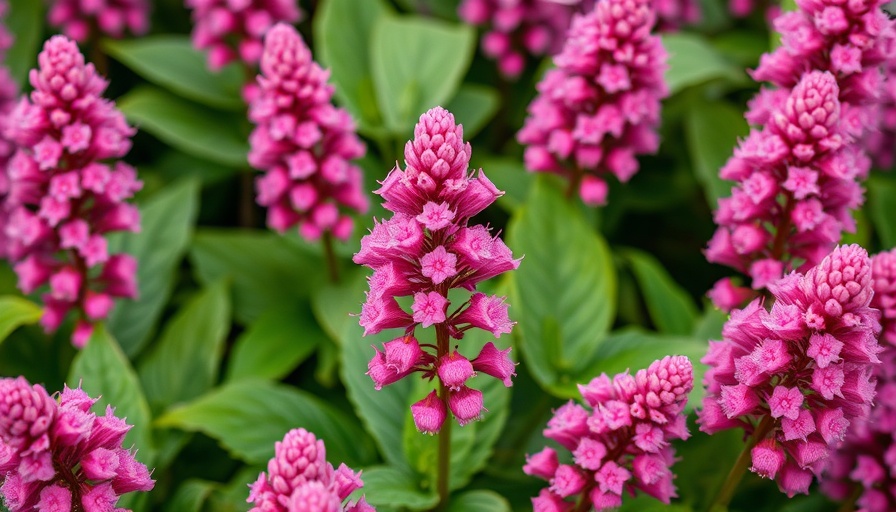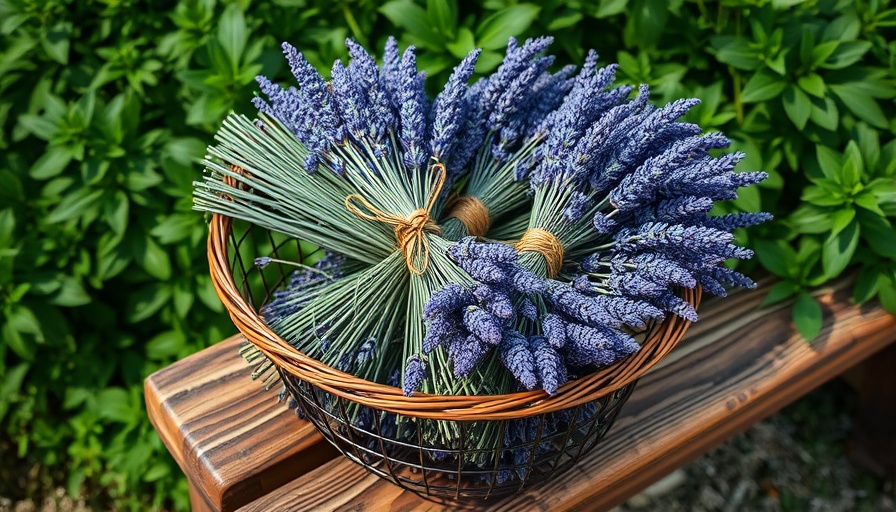
Discovering Hollow Joe-Pye Weed: A Garden Delight
Hollow Joe-Pye weed, known botanically as Eutrochium fistulosum, is a perennial gem in the world of gardening, holding the secret to creating a vibrant backyard ecosystem. Native to Eastern North America, it flourishes in USDA Hardiness Zones 4 through 8, offering a spectacle of purple-hued flowers from midsummer to fall.
The Unique Biology of Hollow Joe-Pye Weed
This magnificent plant stands tall between four to seven feet and captivates onlookers with its whorled leaves and distinctive hollow stems. Beyond its beauty, it plays a crucial role in supporting biodiversity; its flowering clusters attract essential pollinators such as bees and butterflies. Additionally, during migration seasons, the robust seed heads become a feast for birds like goldfinches and juncos, creating a dynamic garden habitat.
Gardening Tips: Cultivating Hollow Joe-Pye Weed Effectively
Starting your journey with hollow Joe-Pye weed is simple. Here are some basic gardening tips to ensure your success:
- Soil Type: Ensure it thrives in moist, organically-rich, well-draining soil with a pH of 6.0-8.0.
- Sun Exposure: It prefers full sun to partial shade, making it adaptable to various garden conditions.
- Maintenance: This plant is low-maintenance thanks to its rhizomatous spread and self-seeding abilities. After the first hard freeze, it gracefully dies back, only to triumphantly emerge in the spring with fresh, vibrant foliage.
Cultivating Diversity: The Role of Hollow Joe-Pye Weed
Integrating hollow Joe-Pye weed into your garden not only enhances its aesthetic appeal but also enriches the local ecosystem. Known for its erosion control capabilities, it holds soil together in moist areas, making it an excellent choice for naturalizing, wetland gardens, and landscaping projects focused on environmental sustainability.
Creating Wildlife-Friendly Spaces with Native Plants
In the context of gardening and landscaping ideas, it is becoming increasingly vital to create spaces that foster wildlife. By selecting native plants like hollow Joe-Pye weed, you contribute to a habitat that supports pollinators and various bird species. This commitment to biodiversity is crucial for ecological sustainability, particularly as urbanization continues to diminish natural habitats.
From Traditional Uses to Modern Garden Design
Historically, Native Americans have valued hollow Joe-Pye weed for its potential medicinal uses; today, it stands out as an ornamental choice in landscape design. Gardeners can benefit from the plant's visual appeal while also embracing its historical significance, thus combining aesthetics and practicality in their outdoor spaces.
Practical Tips to Enhance Your Garden
To further elevate your gardening experience, consider the following actionable insights:
- Creating Borders: Incorporate hollow Joe-Pye weed into your garden borders to add height and vibrancy.
- Companion Planting: Pair it with other perennials such as asters or coneflowers to create a riot of color and a thriving pollinator garden.
- Water Management: Establish a garden irrigation plan to ensure sufficient moisture, particularly in drier seasons.
Conclusion: Embrace the Beauty of Biodiversity in Your Garden
Cultivating hollow Joe-Pye weed is more than a gardening project—it's a step towards creating a sustainable and picturesque ecosystem right in your backyard. As you integrate this unique plant into your landscape, not only will you beautify your space, but you will also support local wildlife and contribute to ecological health. Whether you’re an experienced gardener or a beginner starting out, hollow Joe-Pye weed can play a pivotal role in your gardening journey. Dive into this fulfilling endeavor and watch as nature flourishes around you.
If you're excited about creating a haven for pollinators and beautifying your space with captivating plants, start your gardening project today!
 Add Row
Add Row  Add
Add 




Write A Comment